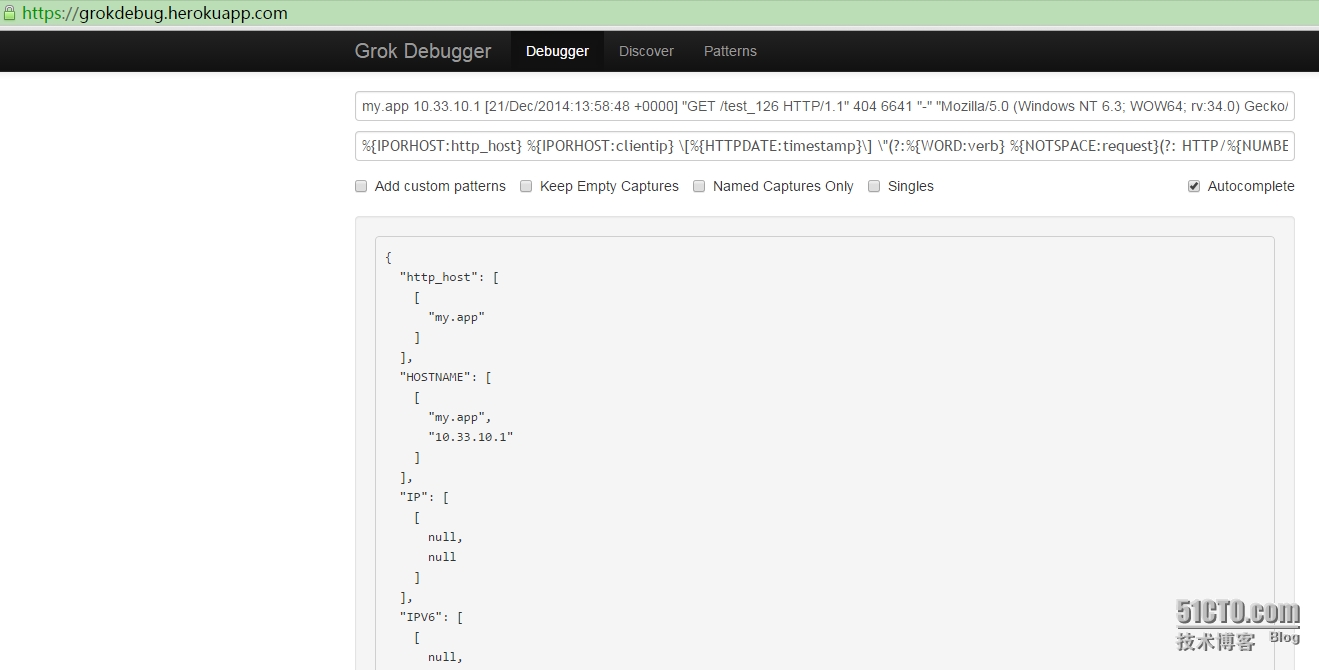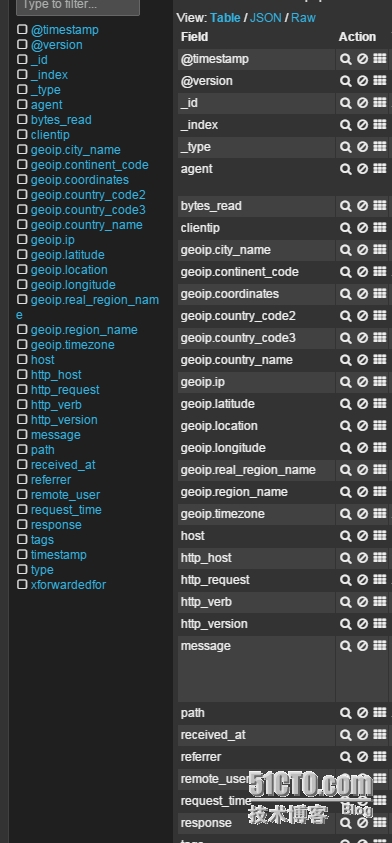标题是不是可以翻译成这样:logstash Filters nginx access log
好了,进入正题,日志管理服务器我用ElasticSearch+LogStash+Kibana+Redis
先说下我的架构:
 远程NGINX采集日志数据到REDIS+logstash+elasticsearch+kibana服务器
远程NGINX采集日志数据到REDIS+logstash+elasticsearch+kibana服务器
至于怎么部署,因本人之前用baidu博客写在那上面了,以后有时间把百度的搬过来
好了,这里就先不说部署了,我们直接进入配置正题
在nginx服务器,我们一、先配置nginx的日志格式
log_format main '$http_host $remote_addr - $remote_user [$time_local] "$request" ''$status $body_bytes_sent "$http_referer" ''"$http_user_agent" "$upstream_addr" $request_time';
二、配置logstash采集文件
1.1 配置logstash patterns
logstash/patterns# vi nginx
NGUSERNAME [a-zA-Z\.\@\-\+_%]+
NGUSER %{NGUSERNAME}
NGINXACCESS %{IPORHOST:http_host} %{IPORHOST:clientip} - %{USERNAME:remote_user} \[%{HTTPDATE:timestamp}\] \"(?:%{WORD:http_verb} %{NOTSPACE:http_request}(?: HTTP/%{NUMBER:http_version})?|%{DATA:raw_http_request})\" %{NUMBER:response} (?:%{NUMBER:bytes_read}|-) %{QS:referrer} %{QS:agent} %{QS:xforwardedfor} %{NUMBER:request_time:float}注意,我们配置的日志格式完全要和我们的patterns解析出来
具体解析方式,可以到https://grokdebug.herokuapp.com/
input:nginx的日志
patterns:就是要过滤的格式,如图

2.1 配置nginx日志采集脚本
logstash#vi nginx_logs.conf
input {file {type => "nginx-access"path => "/www/log/nginx/access/default.log"start_position => "beginning"}
}filter {if [type] == "nginx-access" {grok {match => { "message" => "%{NGINXACCESS}" }}date {match => [ "timestamp" , "dd/MMM/YYYY:HH:mm:ss Z" ]}geoip {source => "clientip"target => "geoip"database =>"/server/logstash/vendor/geoip/GeoLiteCity.dat"add_field => [ "[geoip][coordinates]", "%{[geoip][longitude]}" ]add_field => [ "[geoip][coordinates]", "%{[geoip][latitude]}" ]}
mutate {convert => [ "[geoip][coordinates]", "float" ]} }
}output {redis {host => "10.252.35.170"port => 6379data_type => "list"key => "logstash"}
}这个脚本里,我主要采集了geoip的信息,当然,你也直接可以将数据导入到redis,我就附上我的全脚本吧~~
启动:
#/server/logstash/bin/logstash agent -f /alidata/server/logstash/nginx_logs.conf &
三、配置REDIS+logstash
直接写logstash脚本
logstash# vi nginx.conf
input {redis {host => "127.0.0.1"port => "6379"data_type => "list"key => "logstash"type => "redis-input"codec => "json"}
}output {elasticsearch {embedded => falseprotocol => "http"host => "localhost"port => "9200"}
}启动脚本
#/logstash/bin/logstash agent -f /alidata/server/logstash/nginx.conf &
好的,脚本配置完毕,接下来我们访问看看


转载于:https://blog.51cto.com/xiangcun168/1643577
方法与示例)



方法与示例)
)


方法及示例)



方法与示例)


方法与示例)



